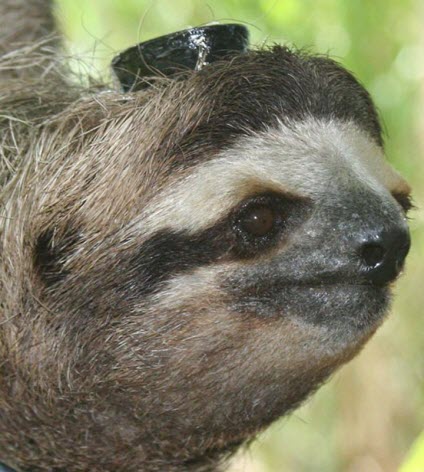Rapid advancements to GPS and biometric tech usher in animal tracking golden age, paper says

The technology and techniques behind animal tracking have come a long way since humans were following footprints in hopes of catching a meal.
With improved satellite imaging enabling high-resolution monitoring across greater spans of time and space, scientists at the Smithsonian Tropical Research Institute say that animal tracking science has entered a golden age.
An article detailing the studies that provide support for their claim is published online in Science.
“Traditional movement tracking is just used to looking at habitat preference,” said Roland Kays, professor at North Carolina State University and lead author of the paper. “These studies highlight a diversity of questions that animal tracking has been used for.”
Advancements to GPS technology are largely responsible for the rapid progress of animal tracking science, Kays said. Within a matter of years, GPS tracking resolution has improved from providing one data point per day (or even per hour) to one data point every few minutes, with some devices now offering one point per second.
Miniaturization and the proliferation of biometric devices have also been a major step for the field, Kays said.
Tracking tags attached to animal subjects are no longer limited to holding a single GPS transceiver. Accelerometers, thermometers and brainwave monitors can be fitted within the same housing, allowing for a more holistic view of an animal’s behavior.
“The same kind of measurements you can get on a Fitbit or any of the other devices we use to monitor people, you can get on an animal now,” Kays said.
The author even mentioned one tracking project that has attached geiger counters to wolves living near the nuclear disaster site at Chernobyl.
Improvements to animal tracking extend beyond the telemetry instruments secured around an animal’s neck, leg or fin, however.
As environmental monitoring becomes more widespread, researchers are increasingly able to cross-reference the myriad ecosystem-level parameters that influence an organism with its biometric data, including habitat composition, productivity and rainfall, for instance.
The melding of these data enable a greater understanding of animal behavior and movement in context with the environment. This type of tracking generates “massive” datasets that can be a challenge to work with, Kays said, but ultimately allows for more comprehensive research.
The authors are unabashed in their use of the term “golden age,” but Kays admits he’d like to see some improvements to animal tracking technology — some of which may be just around the corner.
“We need to get everything smaller,” he said. “We’re still catching a wild animal and attaching a device to it that can potentially have negative impacts on an animal. Smaller devices are also useable on a wider variety of animals.”
As devices continue to shrink, birds, insects and small mammals — all creatures that currently pose a challenge to tracking efforts — will become more suitable for study.
The range of measureable parameters will also continue to expand, Kays said.
Animal biometrics will “parasitize tech designed for human health and other human applications,” eventually permitting non-invasive heart rate monitoring and hormone sensing, the latter of which Kays says is the most exciting potential innovation on the horizon.
Perhaps the greatest indication of a golden age in animal tracking are the growing number of questions that scientists are able to answer with the technology.
“The field has really gone crazy in the last two or three years and we’re really excited about all the new details that we can get about what animals are doing in the wild,” Kays said.
“We wanted to bring it together and show how different things are today than they were just a few years ago.”
Featured Image: Scientists are employing a wider variety of remote sensing biometric devices than ever before, such as the EEG/EMG recorder affixed to this three-toed sloth. (Credit: Niels, Rattenborg, Max Planck Institute for Ornithology)




0 comments